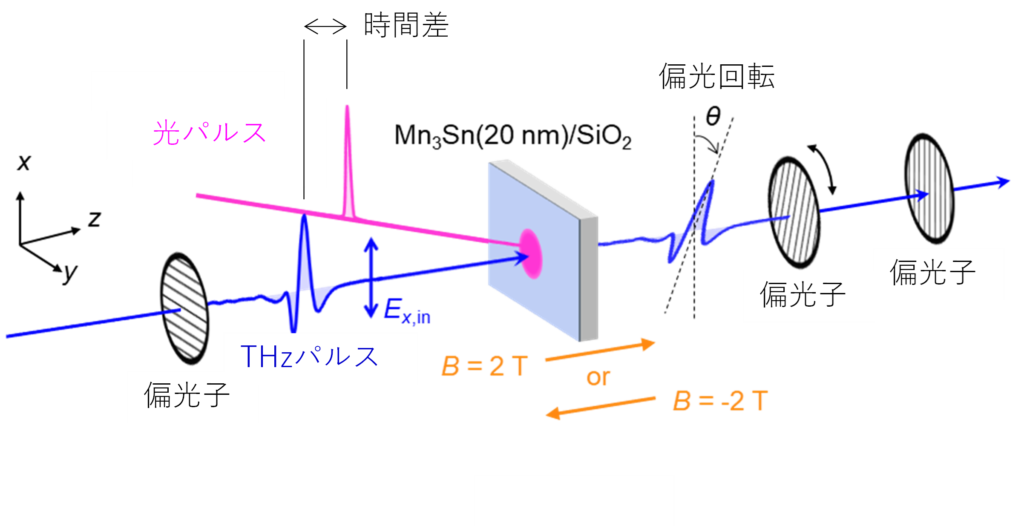Successfully observed ultra-fast changes in the anomalous Hall effect with a time of 10 trillionths of a second
News 2023/03/23
High-speed measurement confronts the extreme speed limit when the signal becomes comparable to the noise level. In the context of broadband mid-infrared spectroscopy, state-o
A research group led by Takuya Matsuda, a JSPS Research Fellow (PD) at the Institute for Solid State Physics and Associate Professor Ryusuke Matsunaga at the University of Tokyo, and a research group led by Professor Satoshi Nakatsuji and Project Associate Professor Tomoya Higo at the Department of Physics, Graduate School of Science, Tohoku University, in collaboration with Associate Professor Takashi Koretsune and The research group led by Professor Satoshi Nakatsuji, Department of Physics, Graduate School of Science, Tohoku University, and Professor Ryo Shimano, Research Center for Low Temperature Science, University of Tokyo, in collaboration with a research group led by Associate Professor Takashi Koretsune, Department of Physics, Tohoku University, and Professor Ryo Shimano, Research Center for Low Temperature Science, University of Tokyo, has successfully observed ultrafast changes in the anomalous Hall effect when a light is applied to magnetic materials on a time scale of 10 trillionth of a second, and shown that the changes can be used to elucidate microscopic mechanisms.
It is known that when an electric field is applied to a magnetic material, an electric current is generated not only in the direction parallel to the electric field but also in the perpendicular direction. This is called the anomalous Hall effect, which, unlike ordinary electrical conduction, has interesting features such as the generation of a dissipation-free current without energy loss. Recently, it has been revealed that the anomalous Hall effect is closely related to the topological properties of materials, attracting even greater attention. On the other hand, there is also an anomalous Hall effect caused by the scattering of electrons by impurities, and it is always a subject of debate which microscopic mechanism is responsible for the anomalous Hall effect whenever it is observed.
In this study, we have realized the first experiment in which a topological magnetic material is irradiated with very short pulses of light and the resulting changes in the anomalous Hall effect are investigated on a time scale of 10 trillionths of a second. This corresponds to measuring the anomalous Hall effect in a very short period of time before the light strikes the material, causing only the electrons to receive energy and reach a high-temperature state, and then the energy is transferred to the lattice and spins. As a result, they observed a sharp 40% decrease in the anomalous Hall effect, while the normal conductivity remained almost unchanged. While this experimental result is well explained if it is due to topological properties, it is completely inconsistent if it is due to impurity scattering. In other words, this study provides a new route to understanding the microscopic mechanism by investigating the anomalous Hall effect immediately after an optical pulse is applied. The anomalous Hall effect is also important as a means of reading magnetic information embedded in magnetic materials using electric current, and the clarification of the mechanism of the anomalous Hall effect change on a time scale of about 10 trillionths of a second will be an important design guideline for the development of high-speed magnetic information processing devices.
See below for more information.
- Aritcle URL : https://journals.aps.org/prl/abstract/10.1103/PhysRevLett.130.126302
- Nakatsuji Lab. : https://www.nakatsuji-lab.phys.s.u-tokyo.ac.jp/?lang=en



